Hailey Bieber leaned into this age-old marketing trick for her 2024 campaigns. Rhode Skin skyrocketed as a result 🚀
What can we learn about branding from the it girl who took an age-old marketing concept and turned it up 100 notches to become on the most talked about beauty brands of 2024?
Hailey Baldwin Bieber was an it girl on the outskirts of fame, slowly climbing the ranks in the 2010’s. Her celebrity friends, and eventual relationship, catapulted her into household name fame in the 2020’s. But despite this recognition, she faced what could only be described as one of the most vicious onslaughts of online harassment and bullying due to the years old love triangle between her husband, Justin Bieber, and his ex, Selena Gomez.
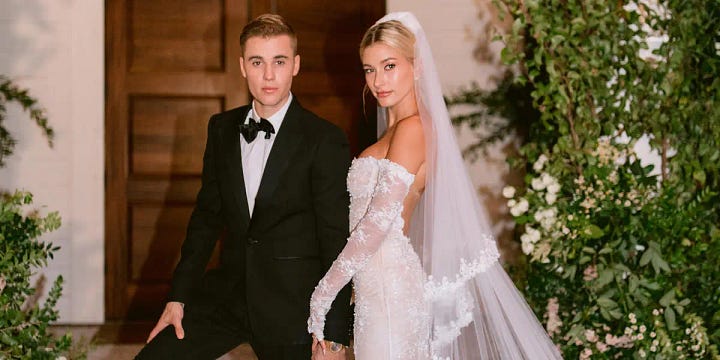

Instead of responding to the online harassment, Hailey Bieber took a different approach. She threw herself into a product launch.
While the celebrity-to-makeup CEO trope can feel gimmicky, Bieber had slowly begun building the foundation of a tastemaker in the makeup space. She launched one of my favorite interview series called “Who’s In My Bathroom?” (that I selfishly wish she still did) where she sat down with famous friends in a bathroom as they did their makeup, ate food and talked. One interview with Kendall Jenner sits at 20 million+ views on YouTube.
The “bathroom of a celebrity” format is not unique (see “Into The Gloss” bathroom interview series or Vogue’s “Beauty Secrets” series on YouTube). But this felt like a window into what Bieber would eventually become, a tastemaker for Gen-Z beauty fanatics.
The Launch
In 2023, Bieber launched her brand “Rhode Skin”. The visuals and concept were simple but walked a fine line on potentially being boring to a consumer base that was used to vibrant colors, fast turn arounds and thematic launches.
The visual branding on the website and in promotional material heavily centered around the grayscale color theme. She included references to the “glazed donut” look that she had become popular for talking about in interviews. She told Gwenyth Paltrow once that she, “likes to go to bed looking like a glazed donut”.
While the “glazed donut” branding popped up occasionally in the marketing materials, it wasn’t until the following year that her brand would seem to make a more concerted effort to closely tie almost every single product launch with a food product.
“Sensory Marketing”
What is “sensory marketing”? This is an age-old concept in branding that suggests audiences resonate with a product that can appeal to one, or more, of their five senses.
Above is a graphic from FourWeekMBA about the topic
You can see the dramatic shift if you look at Rhode Skin’s Instagram account from early 2023 to late 2024.


I believe part of Bieber’s decision to lean into sensory marketing for her makeup brand was from the success of her Krispy Kreme collaboration and the cultural talking points that came from it.
The “strawberry-glazed” descriptor words were all over the branding materials for the new lip peptide treatment + they had an event at a Krispy Kremes. Pictures of Hailey and Justin Bieber entering the event (seemingly dressed for different occasions) became meme’d on multiple platforms.
Correlating food with beauty products is not something Rhode Skin invented. But in a growing sea of beauty brands, it is a strategy they leaned into heavily to differentiate themselves from the rest.
In 2024, Rhode Skin was the second-most talked about celebrity beauty brand, right behind Rare Beauty, according to a 2024 report done by Mintoiro.
CORRECTION: This chart was created by Devil Wears Data on YouTube (my mistake, I thought it was a reference to Mintoiro). DWD is a great YouTube channel with the best deep dive videos. The world needs more creators like DWD. Check her out here (:
When you think of brands like R.E.M., Haus Labs and Kylie Cosmetics, it is hard to associate them with a brand story or strategy. But the two most talked about brands, Rare and Rhode, both have strong brand identities. For Rare, it is “kindness”. For “Rhode”, it is sensory.
Noteable Rhode Campaigns That Centered Around Food
One of the earliest, food-centric campaigns that Rhode Skin did featured Hailey Bieber holding up a yellow passionfruit. This was for the launch of a new lip peptide treatment.
Brilliantly, the official Rhode Skin TikTok account even posted a passionfruit smoothie tutorial to promote the restock of the peptide treatment.
It is a great reminder that marketing is exposure, not always conversion. Let the audience feel like the decision to buy or learn more about your product was their own. Not because you begged them to be interested through out the video and caption. The lip product is not the center of attention in the post. Instead, it appears subtly in the corner of the frame in just a few shots.
Another great campaign that centered around food was the Matilda Djerf one in December of 2024 for the peppermint lip treatment.
You can see from their Instagram grid the same month that they heavily leaned into a peppermint and Christmas branding, even dressing Matilda up as a Cindy Lou Who from “The Grinch”.
The food correlation to a product immediately makes the audience think of your product as a need, not just a want.
Food is something that we must consume and purchase multiple times a day. Beauty products are a fancy add-on that are not required to survive. By associating her product with food, she not only has a great, visual trampoline for the product marketing but she also ties it to a subconcious need that we don’t often associate with a luxury product.
For good measure, and further evidence that the food branding is not a coincidence but rather intentional, here is Hailey Bieber’s latest branding for her Fila collab. She is holding fresh, farmers market food as she poses in shoes.
I will talk more about the brilliance of the Rhode Skin branding in Monday’s episode of the “Ahead of the Curve with Coco Mocoe” podcast. Let me know your thoughts below what other brands or creators have used sensory marketing to go viral! ⬇️
If you enjoyed this free article and appreciate the thought I put into it, consider becoming a paying member of my best-selling Substack to get weekly trend reports and unlock the extended episodes of every podcast! Thank you for supporting this independent publication.






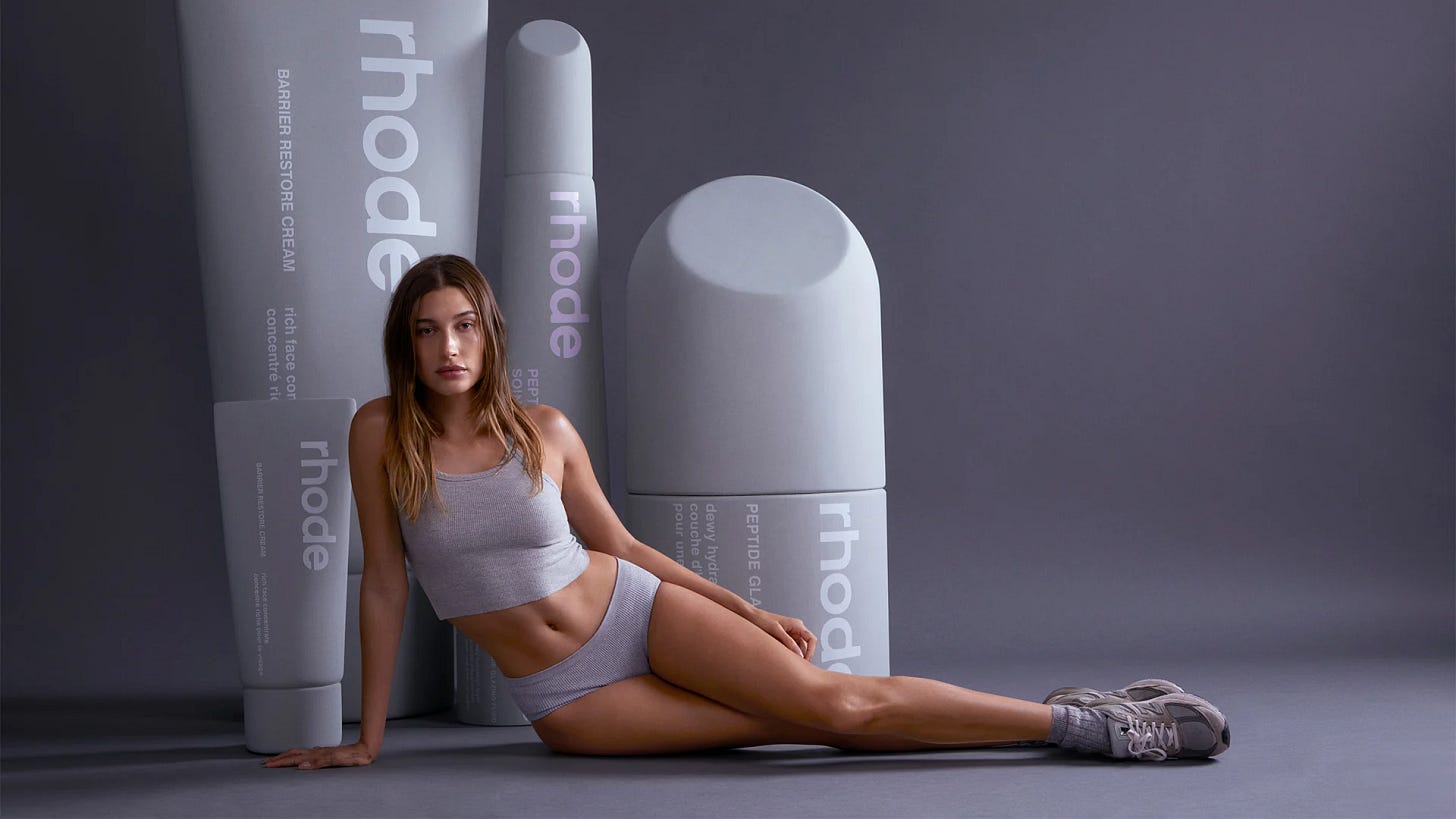


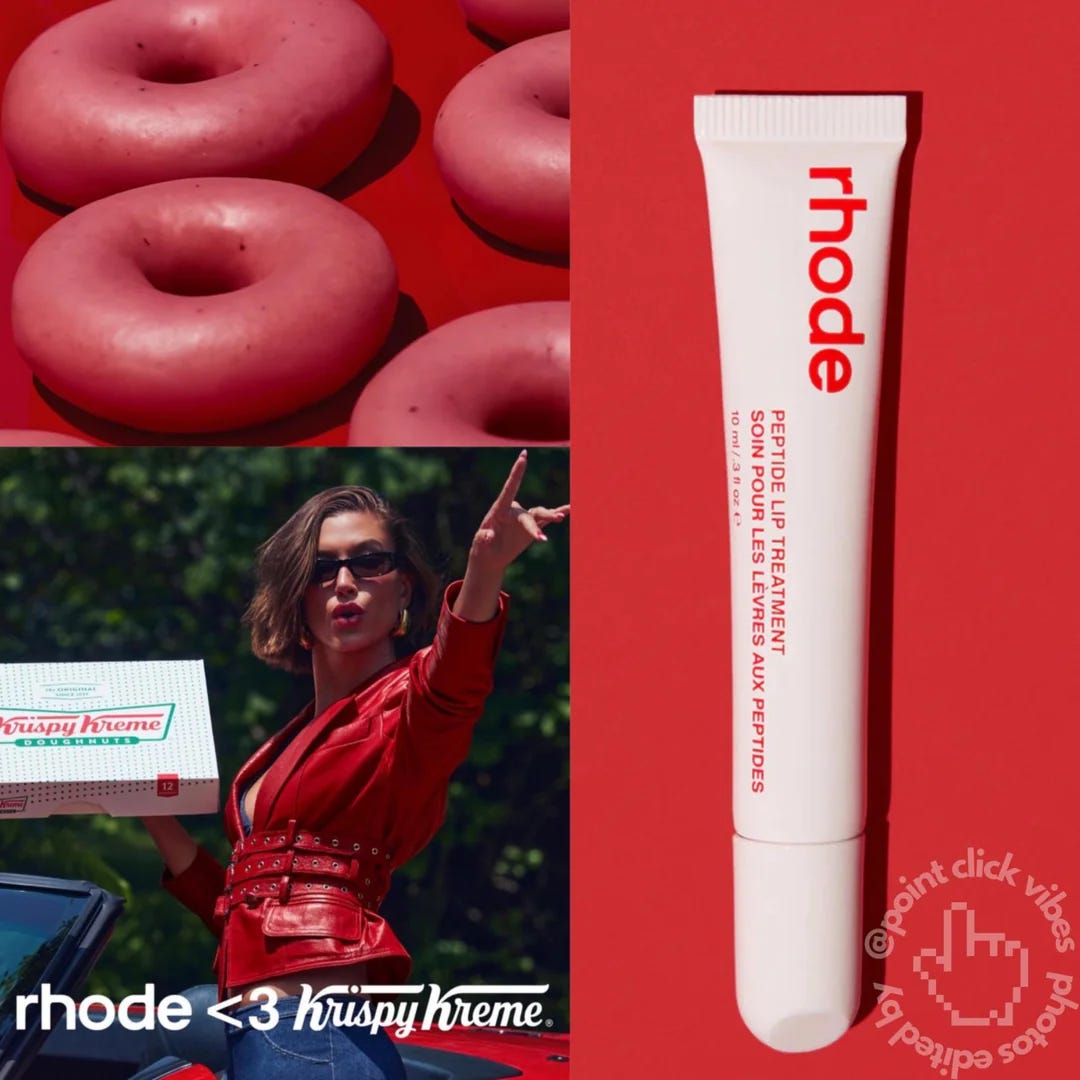
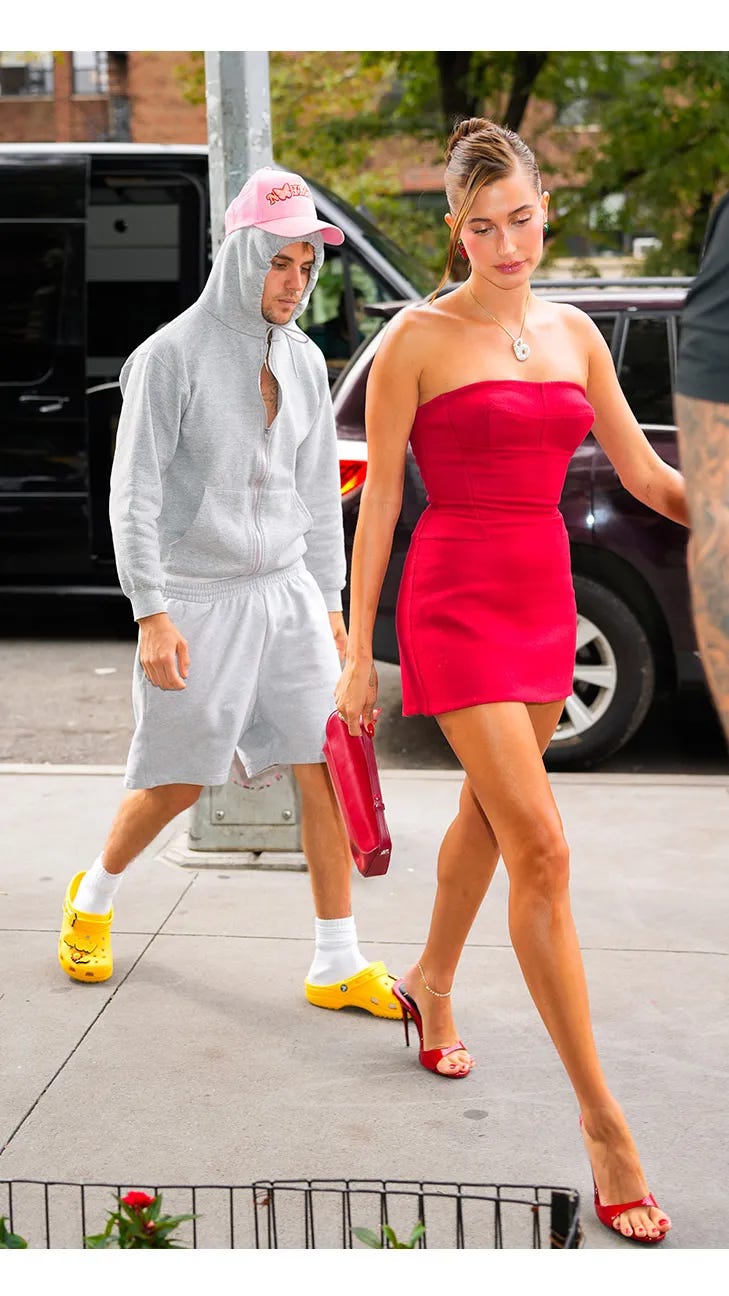
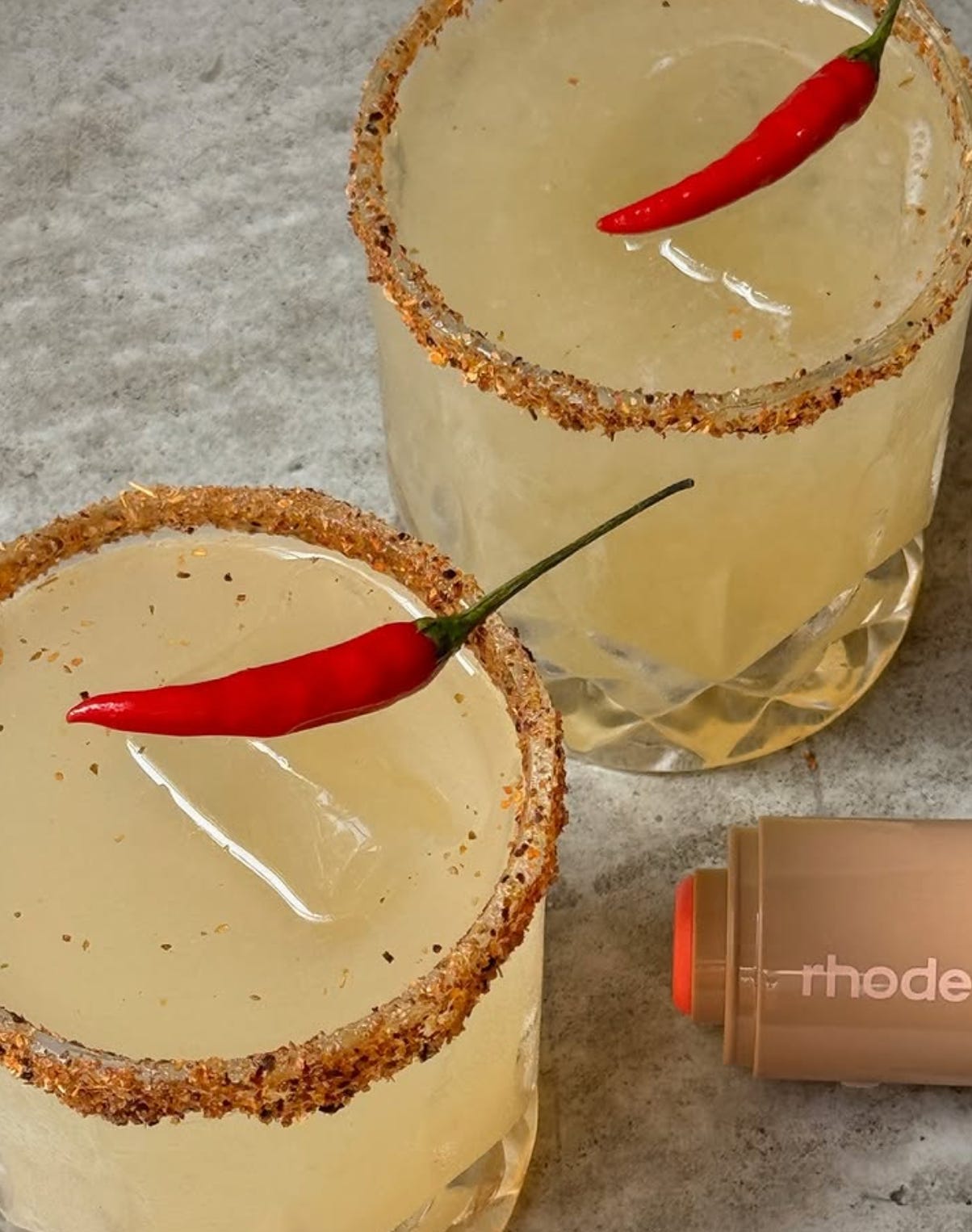
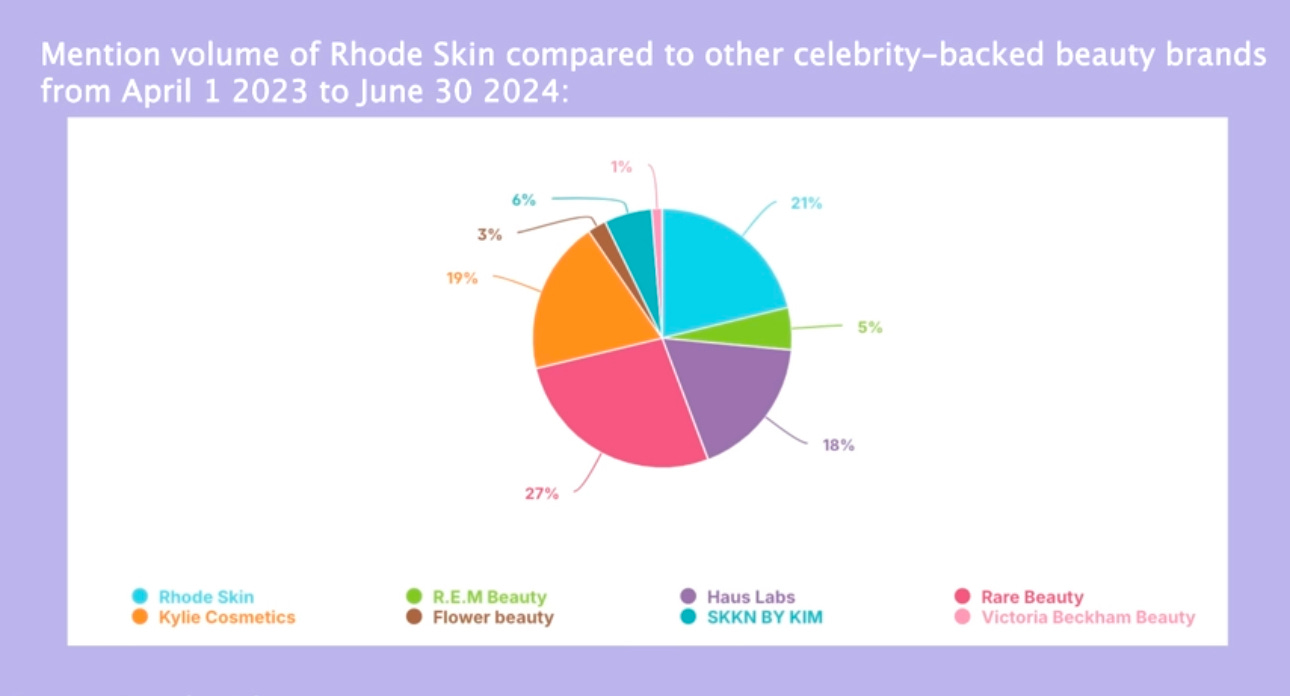


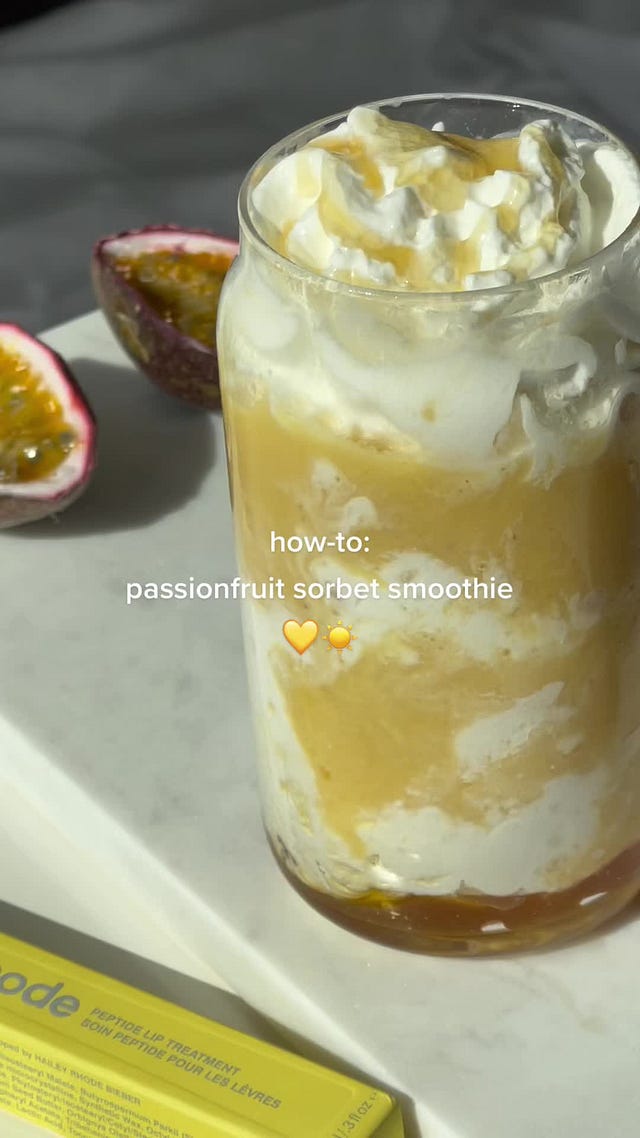




Hi! I noticed you used The Devil Wears Data's chart (the purple one) without crediting her. Can you please add the right source? That is not Mintoiro's work!
Cool article. But I noticed that you failed to provide a reference for the chart that you used. The purple chart is from a video by The Devil Wears Data. Can you kindly update your article with the correct reference? Thank you.